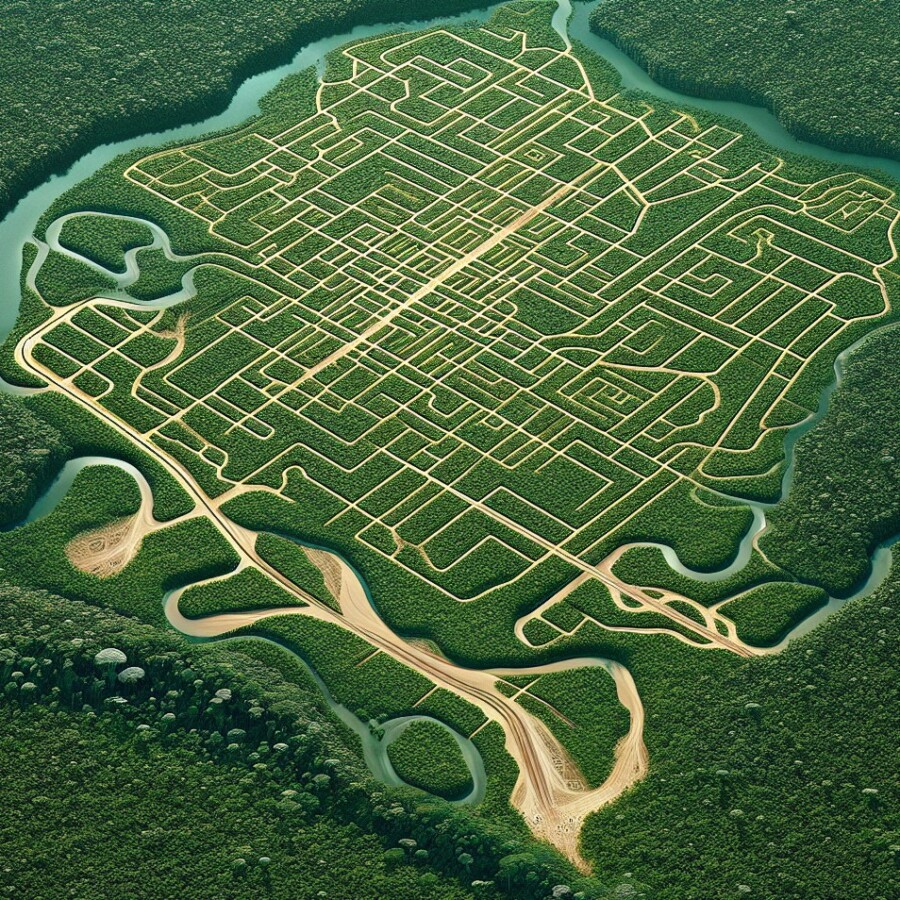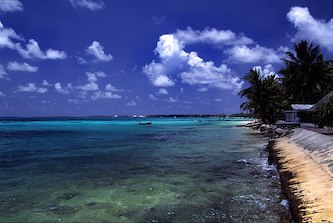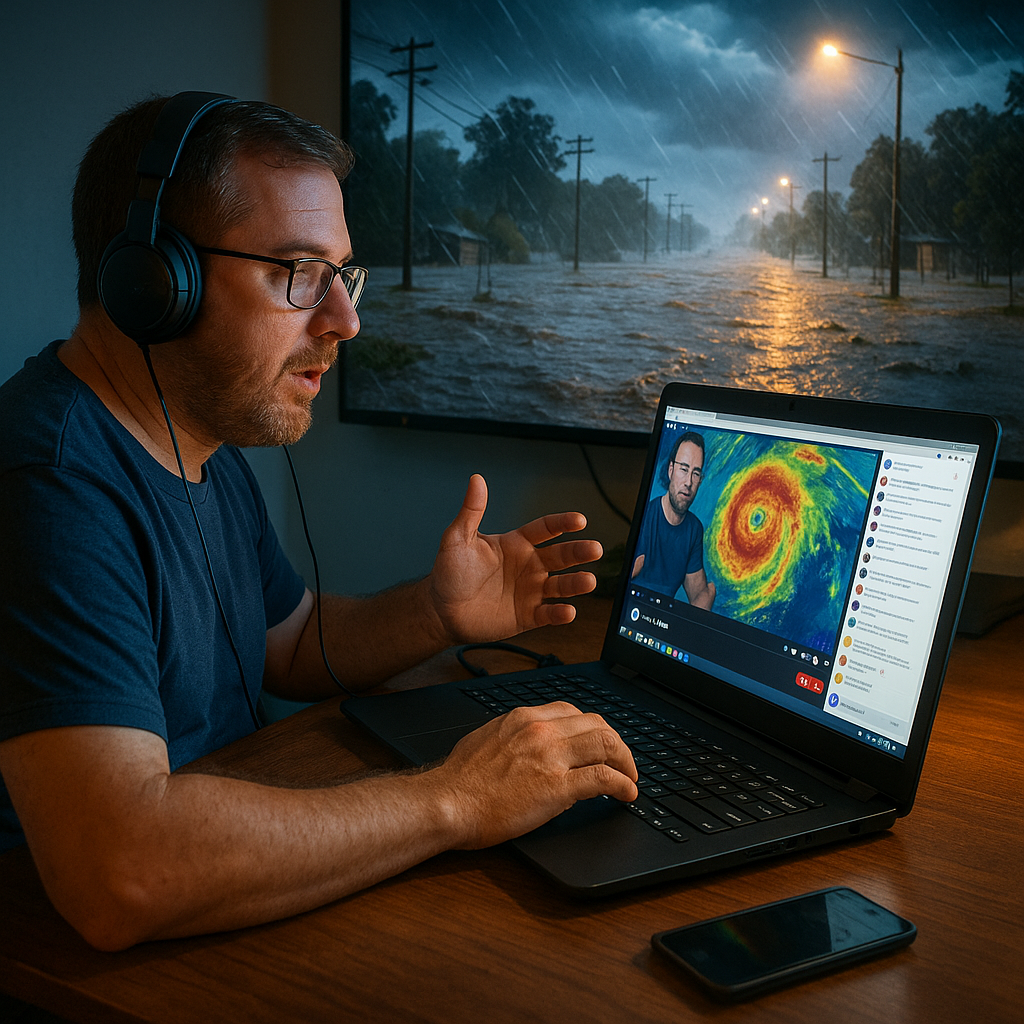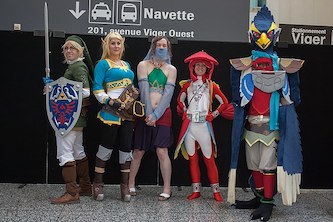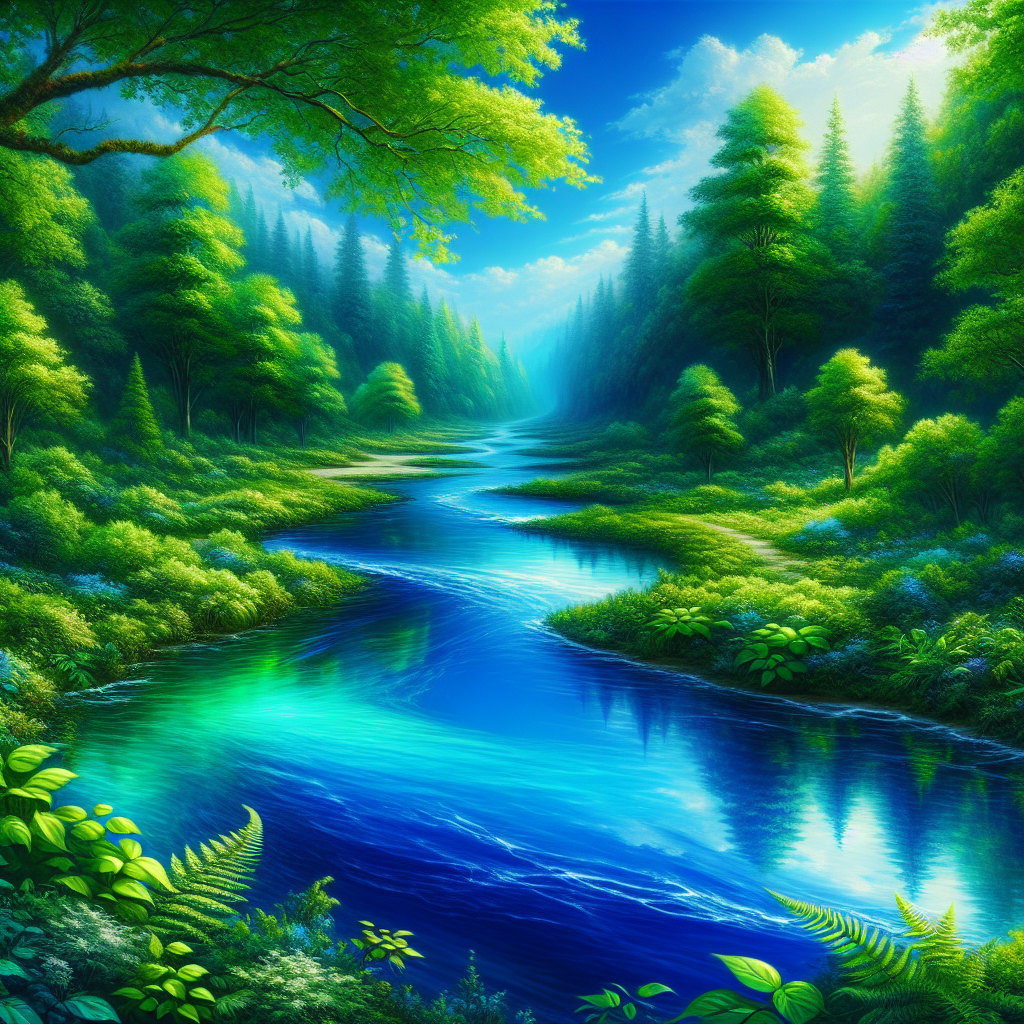Scientists have found a really old city in the Amazon rainforest that was hidden by lots of plants. This is a big deal because it changes what we thought about how people lived in the Amazon a long time ago. We used to think they moved around a lot or lived in small groups, but this city shows that they actually lived in big, complex societies.
The city was built about 2,500 years ago and people lived there for around 1,000 years. It’s hard to know exactly how many people lived there, but scientists think it could be tens of thousands or even hundreds of thousands. They used special technology to find 6,000 rectangular platforms that were probably the foundations of houses and important buildings. The platforms were arranged in groups around open spaces, and there were also long roads that connected everything.
The roads were really well planned and built with right angles. They think the roads were important for ceremonies or beliefs. They also found evidence of canals to manage water and signs that the city was under threat from other groups. The scientists have been studying this city for 25 years, and it’s different from other ancient civilizations we know about. They think the people who lived there focused on farming, especially growing corn and sweet potatoes.
This discovery changes what we thought about ancient people in the Amazon. It shows that they had big cities and complex societies. It’s important because it helps us understand the history and culture of the Amazon region. The scientists want to keep exploring the area around the city to learn even more about this ancient civilization.
Original news source: Huge ancient lost city found in the Amazon (BBC)
🎧 Listen:
Slow
Normal
Fast
📖 Vocabulary:
| 1 | ancient | Very old or from a long time ago |
| 2 | civilization | A large group of people living together in an organized way, with their own language, traditions, and government |
| 3 | societies | Groups of people living together in a community |
| 4 | rectangular | Shaped like a rectangle, with four straight sides and four right angles |
| 5 | foundations | The solid base or underlying support of a structure |
| 6 | ceremonies | Special events or rituals that are performed on important occasions |
| 7 | beliefs | Ideas or convictions that people hold to be true |
| 8 | canals | Man-made waterways used for travel, transportation, or irrigation |
| 9 | evidence | Information or signs that show something is true or exists |
| 10 | threat | A danger or risk that could cause harm or trouble |
| 11 | technology | Tools, machinery, and equipment developed from scientific knowledge |
| 12 | farming | The activity of growing crops and raising livestock for food |
| 13 | discovery | The act of finding something that was not known before |
| 14 | culture | The shared beliefs, values, and practices of a group of people |
| 15 | exploring | The act of traveling through an area to learn about it or find something |
Group or Classroom Activities
Warm-up Activities:
– News Summary
Instructions: In pairs or small groups, students will read the article and write a summary of the main points. They should focus on the discovery of the ancient city in the Amazon rainforest and its significance in changing our understanding of the region’s history and culture.
– Opinion Poll
Instructions: Students will form pairs or small groups and discuss their opinions on the discovery of the ancient city in the Amazon rainforest. They should consider questions such as: What do they think about the discovery? How does it change their understanding of the region? Do they think there are more ancient cities waiting to be discovered? Each group will then share their opinions with the class and a poll can be conducted to see the overall opinions of the class.
– Vocabulary Pictionary
Instructions: In pairs or small groups, students will choose 5-10 vocabulary words from the article and draw pictures to represent each word. They can then take turns showing their drawings to their partner or group, who will try to guess the word. This activity will help students practice vocabulary related to the discovery of the ancient city and its features.
– Speed Summarizing
Instructions: In pairs, students will take turns summarizing the main points of the article in one minute or less. The listener should pay attention and provide feedback on the accuracy and clarity of the summary. After a few rounds, students can switch partners and continue the activity. This activity will help students practice their summarizing skills and improve their ability to convey information concisely.
– Pros and Cons
Instructions: In small groups, students will discuss the pros and cons of the discovery of the ancient city in the Amazon rainforest. They should consider both the positive and negative aspects of the discovery, such as the new knowledge gained about the region’s history versus the potential impact on the environment or indigenous communities. Each group will then present their findings to the class and engage in a class discussion to explore different perspectives.
🤔 Comprehension Questions:
1. What did scientists find in the Amazon rainforest that was hidden by plants?
2. How does the discovery of this city change our understanding of how people lived in the Amazon in the past?
3. When was the city built and how long did people live there?
4. How many people do scientists think could have lived in the city?
5. What did scientists find that they believe were the foundations of houses and important buildings?
6. How were the platforms arranged in the city?
7. What evidence did scientists find that the city was under threat from other groups?
8. What did the people who lived in the city focus on farming?
Go to answers ⇩
🎧✍️ Listen and Fill in the Gaps:
Scientists have (1)______ a really old city in the Amazon rainforest that was hidden by lots of plants. This is a big deal because it changes what we thought about how (2)______ lived in the Amazon a long time ago. We used to think they moved around a lot or lived in small groups, but this city (3)______ that they actually lived in big, (4)______ societies.
The city was built about 2,500 years ago and people lived there for around 1,000 years. It’s hard to know exactly how many people lived there, but scientists think it could be tens of thousands or even hundreds of thousands. They used special technology to find 6,000 (5)______ (6)______ that were probably the foundations of houses and important buildings. The platforms were arranged in (7)______ around open spaces, and there were also long roads that (8)______ everything.
The roads were really well planned and (9)______ with right angles. They think the roads were important for ceremonies or (10)______. They also found evidence of canals to manage water and signs that the city was under (11)______ from other groups. The (12)______ have been studying this city for 25 years, and it’s different from other ancient civilizations we know about. They think the people who lived there focused on farming, especially growing corn and sweet potatoes.
This discovery changes what we thought about ancient people in the (13)______. It shows that they had big (14)______ and complex societies. It’s important because it helps us (15)______ the history and (16)______ of the Amazon region. The scientists want to keep exploring the area around the city to learn even more about this ancient civilization.
Go to answers ⇩
💬 Discussion Questions:
Students can ask a partner these questions, or discuss them as a group.
1. What do you think it would be like to live in a city hidden in the rainforest?
2. How would you feel if you discovered an ancient city like this?
3. Do you think it’s important to learn about the history and culture of different regions? Why or why not?
4. What do you think the people in this ancient city did for fun or entertainment?
5. How do you think the people in this city managed to build such complex societies without modern technology?
6. Do you think it would be difficult to live in a city with tens of thousands or even hundreds of thousands of people? Why or why not?
7. What do you think the roads and canals were used for in this ancient city?
8. How do you think the people in this city managed to grow enough food for everyone?
9. Do you think it’s important to preserve and explore ancient civilizations? Why or why not?
10. What do you think we can learn from studying ancient civilizations like this one?
11. How do you think this discovery will change our understanding of the Amazon region?
12. Do you think there are more ancient cities hidden in the rainforest? Why or why not?
13. What do you think it would be like to be an archaeologist studying ancient civilizations?
14. How do you think technology has helped us discover and learn about ancient cities like this one?
15. Do you think it’s possible for ancient civilizations to still exist in remote parts of the world? Why or why not?
Individual Activities
📖💭 Vocabulary Meanings:
Match each word to its meaning.
Words:
1. ancient
2. civilization
3. societies
4. rectangular
5. foundations
6. ceremonies
7. beliefs
8. canals
9. evidence
10. threat
11. technology
12. farming
13. discovery
14. culture
15. exploring
Meanings:
(A) Groups of people living together in a community
(B) Information or signs that show something is true or exists
(C) Special events or rituals that are performed on important occasions
(D) Ideas or convictions that people hold to be true
(E) Shaped like a rectangle, with four straight sides and four right angles
(F) The solid base or underlying support of a structure
(G) Tools, machinery, and equipment developed from scientific knowledge
(H) Man-made waterways used for travel, transportation, or irrigation
(I) The shared beliefs, values, and practices of a group of people
(J) A danger or risk that could cause harm or trouble
(K) The act of traveling through an area to learn about it or find something
(L) Very old or from a long time ago
(M) A large group of people living together in an organized way, with their own language, traditions, and government
(N) The act of finding something that was not known before
(O) The activity of growing crops and raising livestock for food
Go to answers ⇩
🔡 Multiple Choice Questions:
1. What did scientists find in the Amazon rainforest?
(a) A hidden treasure
(b) A new species of plant
(c) A lost tribe of people
(d) A really old city
2. How long ago was the city built?
(a) About 100 years ago
(b) About 2,500 years ago
(c) About 500 years ago
(d) About 10,000 years ago
3. How long did people live in the city?
(a) Around 100 years
(b) Around 500 years
(c) Around 1,000 years
(d) Around 10,000 years
4. How many rectangular platforms were found in the city?
(a) 1,000
(b) 6,000
(c) 10,000
(d) 100
5. How were the platforms arranged in the city?
(a) In groups around open spaces
(b) In a straight line
(c) In a circular pattern
(d) Randomly scattered
6. What did the scientists find evidence of in the city?
(a) Underground tunnels
(b) Ancient artifacts
(c) Hidden treasure
(d) Canals to manage water
7. What did the scientists think the roads in the city were used for?
(a) Ceremonies or beliefs
(b) Transportation of goods
(c) Sports and games
(d) Defense against enemies
8. What did the people in the ancient city focus on farming?
(a) Hunting and gathering
(b) Fishing in the nearby rivers
(c) Growing corn and sweet potatoes
(d) Raising livestock
Go to answers ⇩
🕵️ True or False Questions:
1. The roads were built without right angles and were likely used for everyday transportation or trade.
2. Primitive technology was used to identify 6,000 circular platforms that likely served as the foundations of houses and important structures.
3. This finding challenges previous beliefs about how people lived in the Amazon long ago.
4. Scientists have discovered an ancient city in the Amazon rainforest that was hidden by dense vegetation.
5. The city was constructed approximately 2,500 years ago and was inhabited for about 1,000 years.
6. These platforms were organized in groups around open spaces, with well-planned roads connecting them.
7. The exact population of the city is certain, it could have only been a few hundred people.
8. The city’s inhabitants focused on hunting, particularly the cultivation of wild animals and plants.
Go to answers ⇩
📝 Write a Summary:
Write a summary of this news article in two sentences.
Check your writing now with the best free AI for English writing!
Writing Questions:
Answer the following questions. Write as much as you can for each answer.
Check your answers with our free English writing assistant!
1. What did scientists recently discover in the Amazon rainforest?
2. How does this discovery change what we thought about ancient people in the Amazon?
3. How old is the city that was found in the Amazon rainforest?
4. How did scientists estimate the population of the city?
5. What were some of the features found in the city that suggest it had a complex society?
✅ Answers
🤔✅ Comprehension Question Answers:
1. Scientists found a really old city in the Amazon rainforest that was hidden by lots of plants.
2. The discovery of this city changes our understanding of how people lived in the Amazon in the past because it shows that they actually lived in big, complex societies, rather than moving around a lot or living in small groups.
3. The city was built about 2,500 years ago and people lived there for around 1,000 years.
4. Scientists think that tens of thousands or even hundreds of thousands of people could have lived in the city.
5. Scientists found 6,000 rectangular platforms that they believe were the foundations of houses and important buildings.
6. The platforms were arranged in groups around open spaces.
7. Scientists found evidence of canals to manage water and signs that the city was under threat from other groups.
8. The people who lived in the city focused on farming, especially growing corn and sweet potatoes.
Go back to questions ⇧
🎧✍️✅ Listen and Fill in the Gaps Answers:
(1) found
(2) people
(3) shows
(4) complex
(5) rectangular
(6) platforms
(7) groups
(8) connected
(9) built
(10) beliefs
(11) threat
(12) scientists
(13) Amazon
(14) cities
(15) understand
(16) culture
Go back to questions ⇧
📖💭✅ Vocabulary Meanings Answers:
1. ancient
Answer: (L) Very old or from a long time ago
2. civilization
Answer: (M) A large group of people living together in an organized way, with their own language, traditions, and government
3. societies
Answer: (A) Groups of people living together in a community
4. rectangular
Answer: (E) Shaped like a rectangle, with four straight sides and four right angles
5. foundations
Answer: (F) The solid base or underlying support of a structure
6. ceremonies
Answer: (C) Special events or rituals that are performed on important occasions
7. beliefs
Answer: (D) Ideas or convictions that people hold to be true
8. canals
Answer: (H) Man-made waterways used for travel, transportation, or irrigation
9. evidence
Answer: (B) Information or signs that show something is true or exists
10. threat
Answer: (J) A danger or risk that could cause harm or trouble
11. technology
Answer: (G) Tools, machinery, and equipment developed from scientific knowledge
12. farming
Answer: (O) The activity of growing crops and raising livestock for food
13. discovery
Answer: (N) The act of finding something that was not known before
14. culture
Answer: (I) The shared beliefs, values, and practices of a group of people
15. exploring
Answer: (K) The act of traveling through an area to learn about it or find something
Go back to questions ⇧
🔡✅ Multiple Choice Answers:
1. What did scientists find in the Amazon rainforest?
Answer: (d) A really old city
2. How long ago was the city built?
Answer: (b) About 2,500 years ago
3. How long did people live in the city?
Answer: (c) Around 1,000 years
4. How many rectangular platforms were found in the city?
Answer: (b) 6,000
5. How were the platforms arranged in the city?
Answer: (a) In groups around open spaces
6. What did the scientists find evidence of in the city?
Answer: (d) Canals to manage water
7. What did the scientists think the roads in the city were used for?
Answer: (a) Ceremonies or beliefs
8. What did the people in the ancient city focus on farming?
Answer: (c) Growing corn and sweet potatoes
Go back to questions ⇧
🕵️✅ True or False Answers:
1. The roads were built without right angles and were likely used for everyday transportation or trade. (Answer: False)
2. Primitive technology was used to identify 6,000 circular platforms that likely served as the foundations of houses and important structures. (Answer: False)
3. This finding challenges previous beliefs about how people lived in the Amazon long ago. (Answer: True)
4. Scientists have discovered an ancient city in the Amazon rainforest that was hidden by dense vegetation. (Answer: True)
5. The city was constructed approximately 2,500 years ago and was inhabited for about 1,000 years. (Answer: True)
6. These platforms were organized in groups around open spaces, with well-planned roads connecting them. (Answer: True)
7. The exact population of the city is certain, it could have only been a few hundred people. (Answer: False)
8. The city’s inhabitants focused on hunting, particularly the cultivation of wild animals and plants. (Answer: False)
Go back to questions ⇧



